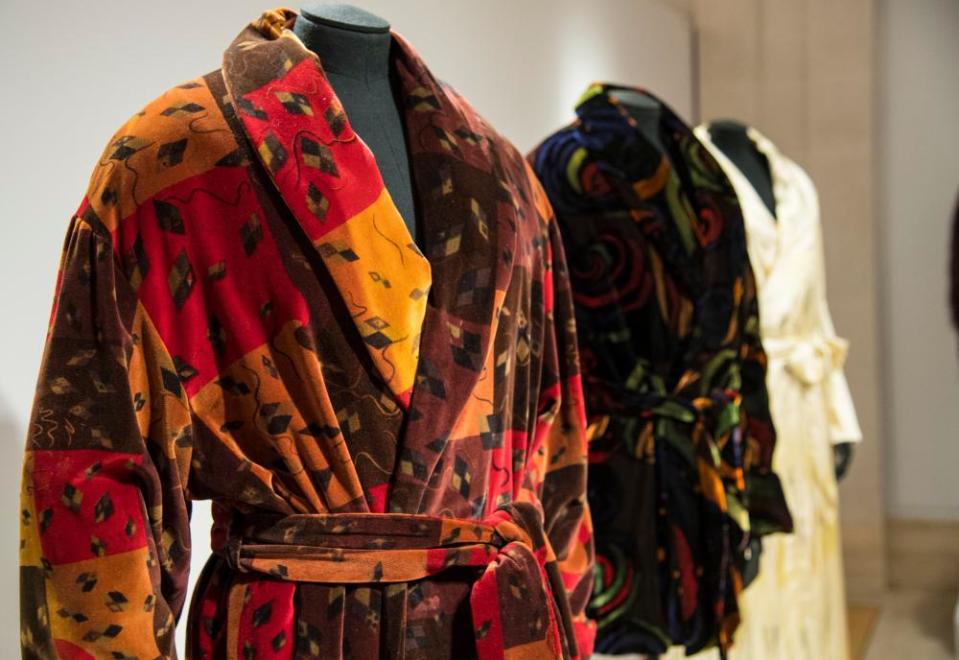No one got Angela Carter like Corinna Sargood
I have been relishing an illustrated book by Corinna Sargood. I love this artist’s paintings of Mexican life: bright scenes on wood, some in tin frames, crammed with tiny figures: a harpist, a bullfighter, a psychiatrist appealing for patients through a loudspeaker. They often have moving parts and secret windows; in one, miniature doors swing open to show the painter and her carpenter husband reading in bed. The Village in the Valley, published this month by Prospect Books, is Sargood’s account of the annual visits that inspired the pictures: bullets whizzing through the air at night, days spent making furniture and new friends.
The book has an additional interest. Sargood was Angela Carter’s illustrator and close friend. Their imaginations were highly attuned; when Carter died in 1992, Sargood’s drawings decorated a shocking-pink invitation to a memorial in Brixton. She used her first visit to Mexico to work on linocuts for The Virago Book of Fairy Tales, which Carter was editing. Being too ill to travel, the writer had instructed the artist: “Do Mexico for me.”
I was struck by another aspect of Carter’s imagination when writing background material for a collection of her radio plays, released last week on Audible, among them, a dramatisation of the murders on which Peter Jackson based Heavenly Creatures and a raunchy Puss in Boots. Carter called herself a “child of the radio age” and I had always admired the precision of her audio directions: one specifies the noise made by the fingernail of a lady vampire. Still, I had not realised just how highly she valued the medium. Her praise of its transporting qualities is fervent. It may have started in nostalgia but it has lately acquired a prescient ring: we are now in a new radio era, the audio age. Not that BBC executives seem to have noticed: they have been busy chipping away at the drama slots.
Take the Coward’s way

Noël Coward: Art & Style, scheduled for 2020 but delayed by the pandemic, opened at London’s Guildhall Art Gallery last week. His early visual talent was remarkable: ink and watercolour drawings from teenage notebooks include a startling, sprite-like figure in Bowie-style jumpsuit and Struwwelpeter hair. The friendships are intriguing; in particular, the photographs of Vivien Leigh have an unexpected tenderness. The clothes, of course, are the stars. There is a serpentine reconstruction of the white satin gown Gertrude Lawrence wore in Private Lives and a gold lamé, fur-trimmed theatre cape by Lucile that would have been hell in the stalls: it looks heavy enough to be a coronation robe. Coward’s much anticipated dressing gowns are luxurious but surprisingly boxy. Who thought it was a good idea to make so many men’s gowns stop at the knee? It exposes a section of the male leg that, if not in pyjamas, is seldom a chap’s most amusing part.
Pets win prizes
Watching the final episode of Lupin on Netflix, I worried about the disappearance of the dog that had once belonged to a journalist. Trained to bark whenever he heard the villain’s name, he was one of the series’ more ingenious touches, not least because he was called J’Accuse.
The names of pets are a good guide to the spirit of a drama. Shakespeare did well with the dog called Crab in The Two Gentlemen of Verona. Tom Stoppard has excelled with tortoises: Pat, Plautus and Lightning. Names in The Archers – Meg, Scruff – are mostly stolid. As so often, the winner is Call My Agent!. The terrier carried around by Liliane Rovère poses a challenge for the forthcoming English-language version. He is called Jean Gabin. Which of our stars is chic enough to give his name to a mutt?
• Susannah Clapp is an Observer columnist

 Yahoo Movies
Yahoo Movies 
